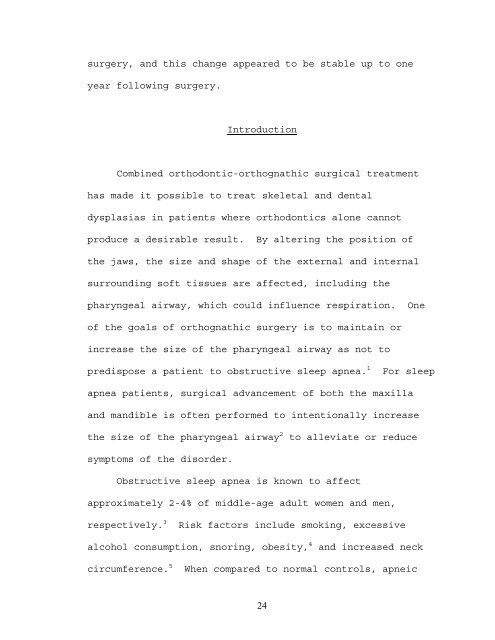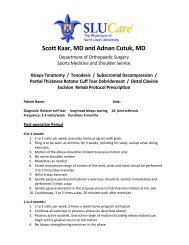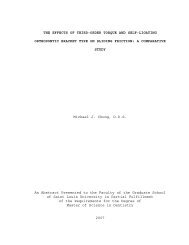PHARYNGEAL AIRWAY VOLUME FOLLOWING ...
PHARYNGEAL AIRWAY VOLUME FOLLOWING ...
PHARYNGEAL AIRWAY VOLUME FOLLOWING ...
You also want an ePaper? Increase the reach of your titles
YUMPU automatically turns print PDFs into web optimized ePapers that Google loves.
surgery, and this change appeared to be stable up to one<br />
year following surgery.<br />
Introduction<br />
Combined orthodontic-orthognathic surgical treatment<br />
has made it possible to treat skeletal and dental<br />
dysplasias in patients where orthodontics alone cannot<br />
produce a desirable result. By altering the position of<br />
the jaws, the size and shape of the external and internal<br />
surrounding soft tissues are affected, including the<br />
pharyngeal airway, which could influence respiration. One<br />
of the goals of orthognathic surgery is to maintain or<br />
increase the size of the pharyngeal airway as not to<br />
predispose a patient to obstructive sleep apnea. 1 For sleep<br />
apnea patients, surgical advancement of both the maxilla<br />
and mandible is often performed to intentionally increase<br />
the size of the pharyngeal airway 2 to alleviate or reduce<br />
symptoms of the disorder.<br />
Obstructive sleep apnea is known to affect<br />
approximately 2-4% of middle-age adult women and men,<br />
respectively. 3 Risk factors include smoking, excessive<br />
alcohol consumption, snoring, obesity, 4 and increased neck<br />
circumference. 5 When compared to normal controls, apneic<br />
24

















